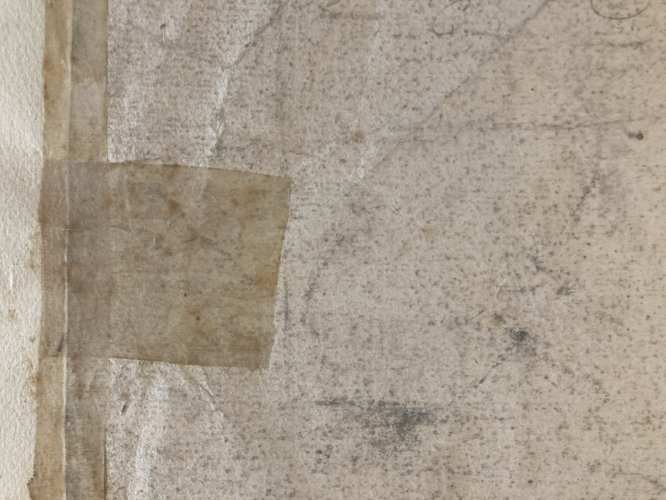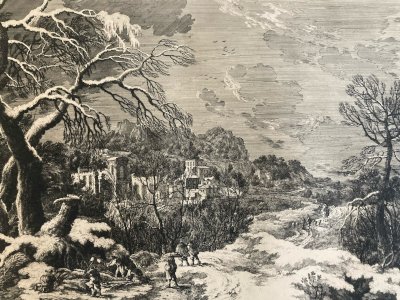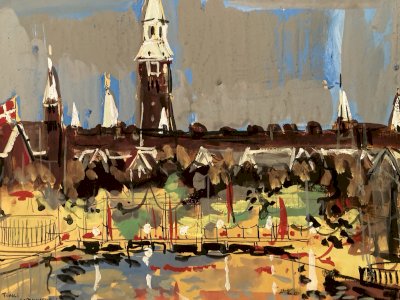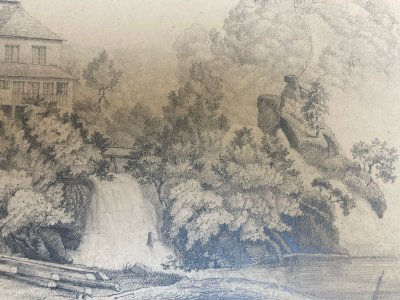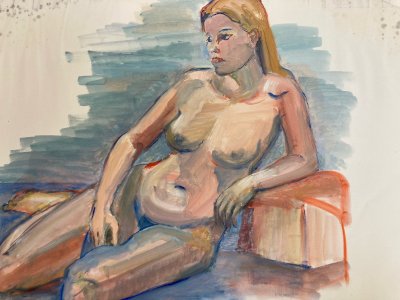- Sell Now
- Home
-
FURNISH
All STORAGE FURNITURE • Wardrobe • Chests of drawers, Chiffonnier • Sideboard • Shelves, Bookshelves • File cabinet • Sewing Furniture • Bar cabinet • TV Stand • Trunk, Chest TABLE & BEDSIDE TABLE • Dinner Table • Coffee table, side table, end table & Bedside • Console, Pedestal table & Selette • Serving Table, Trolley • Card Table • Draper's counter & table SEAT • Sofa • Armchair • Chair • Stool • Bench • Daybed • Beanbag & Footrest • Deckchair & Outdoor DESK, SECRETARY, DRESSING TABLE GARDEN LOUNGE BEDDING • Bed • Bedhead • Cradle, Moses basket CRAFT FURNITURE, WORKSHOP • Workbench • Stool, Ladder, Step • Easel & Trestle SCREEN PIANO
-
DECORATE
All TO PUT • Sculpture, Statuette • Vase & Planter • Dame Jeanne, Bonbonne & Flacon • Bridal globe, Dome • Pin tray, Ashtray • Candlestick & Candle • Photo frame • Stone, Fossil, Mineral • Earth Globe MIRROR WALL DECORATION • Painting • Engraving & Illustration • Poster • Tapestry • Wall Frame • Plate & Sign • Juju Hat & Wall Paniel • Mask • Hunting Trophy • Other object to hang CLOCK, PENDULUM & ALARM CLOCK ARRANGEMENT • Jar, Box & Case • Basket, Wastebasket & Crates • Magazine Rack & Vinyl Holder • Display & Spinner • Coat hook & Coat rack • Furniture Valet & Mannequin • Towel Holder • Suitcase & Travel Bag • Bottle Rack • Umbrella holder BATHROOM OFFICE • Mail holder • Bookends • Sulphide & Paperweight • Stationery FIREPLACE ACCESSORIES HOBBIES • Vintage Sport • Music • Vintage device • Smoking Item • Militaria, Ancient weapon • Miniature Vehicle • Game, Playing Cards • Collection object & Curiosity BIRD CAGE RELIGION, SPIRITUALITY
- TEXTURE
- ILLUMINATE
-
ACCOMODATE
All TABLE & SERVING • Plate • Silverware • Knife Holder • Glass • Bowl, Mug, Cup • Bowl, Ramekin & Cup • Dish, Cup & Salad Bowl • Tray, Basket & Server • Table Mat • Pitcher, Carafe, Bottle, Tea & Coffee Jug • Ice Bucket • Salt & Pepper shakers, Oil & Vinegar shakers • Sugar and jam maker • Gravy boat • Butter dish • Egg cup • Terrine OLD BALANCE CUTTING BOARD GRINDER CASSEROLE, SAUCEPAN & PAN KITCHEN UTENSIL & ACCESSORY
- TINKER
- KIDS
- Jewelry & Accessories
Login
Description
⸻ Description of the work This is an engraving made in 1678 by Jean Pesne (1623–1700) after a painting by Nicolas Poussin (1594–1665). The image represents one of Hercules' labors, namely his battle against the Amazon Hippolyta, queen of the Amazons, to seize her belt. The scene is dramatic and dynamic: Hercules, in a position of strength, confronts the Amazon on horseback, drawing her bow to retaliate. Another Amazon lies on the ground, crushed under the horse, reinforcing the brutal nature of the fight. In the background, a twisted tree frames the composition. The figures are muscular and idealized, in the classic style of Poussin, and the anatomical details and drapery are rendered with great finesse by the engraving. ? Note: A restoration is visible in the lower right part, under the front legs of the horse. This restoration can be distinguished in the photo, affecting the texture and continuity of the line in this area. ⸻ Nicolas Poussin (1594–1665) – Brief biography A major painter of French classicism, Nicolas Poussin was born in Les Andelys in Normandy. He spent most of his career in Rome, where he developed a rigorous and intellectual style, inspired by Greco-Roman antiquity and the masters of the Renaissance. He excels in mythological, biblical, and historical subjects, favoring composition, balance, and narrative clarity. His work will have a lasting influence on French art, especially in the 17th and 18th centuries. ⸻ Jean Pesne (1623–1700) – More detailed biography Jean Pesne, also spelled Pezenne, was a French engraver and painter born in Rouen in 1623, into a family of Flemish artists. He studied painting and engraving in France, then refined his art in Rome and Northern Italy, where he was strongly influenced by the Italian school and engravers such as Cornelis Bloemaert. Upon his return to France, Jean Pesne became one of the official engravers of the court of Louis XIV. In 1663, he was received at the Royal Academy of Painting and Sculpture, where he became one of its leading engravers. He collaborated notably with Charles Le Brun, the king's first painter, for reproducing his works. He was also the director of the engraving workshop at the Gobelins Manufactory, which attests to his significant institutional recognition. Pesne distinguished himself through his engravings of famous paintings, notably those of Raphael, Le Brun, and Nicolas Poussin, whose work he helped disseminate throughout Europe. He is appreciated for his sense of modeling, mastery of shadows, and ability to translate the original painter's style into the language of engraving. His work is marked by great technical rigor and a constant concern for fidelity to the spirit of the compositions. He died in Paris in 1700, leaving behind an important engraved oeuvre that fully contributed to the radiance of French classical art. ⸻ Would you also like a presentation frame suggestion or a more in-depth stylistic analysis comment? Authenticity: Original Type: Engraving Period: XIX century and earlier Support: On paper Genre: Academic Theme: History, War
Réf :
#337823
Related Products
Comments
Engraving 1678 XVII Hercules' Labors Amazon Jean Pesne Nicolas Poussin
850€
31500 Toulouse
Ce site contient des liens d’affiliation pour lesquels je peux recevoir une compensation.
Description
⸻ Description of the work This is an engraving made in 1678 by Jean Pesne (1623–1700) after a painting by Nicolas Poussin (1594–1665). The image represents one of Hercules' labors, namely his battle against the Amazon Hippolyta, queen of the Amazons, to seize her belt. The scene is dramatic and dynamic: Hercules, in a position of strength, confronts the Amazon on horseback, drawing her bow to retaliate. Another Amazon lies on the ground, crushed under the horse, reinforcing the brutal nature of the fight. In the background, a twisted tree frames the composition. The figures are muscular and idealized, in the classic style of Poussin, and the anatomical details and drapery are rendered with great finesse by the engraving. ? Note: A restoration is visible in the lower right part, under the front legs of the horse. This restoration can be distinguished in the photo, affecting the texture and continuity of the line in this area. ⸻ Nicolas Poussin (1594–1665) – Brief biography A major painter of French classicism, Nicolas Poussin was born in Les Andelys in Normandy. He spent most of his career in Rome, where he developed a rigorous and intellectual style, inspired by Greco-Roman antiquity and the masters of the Renaissance. He excels in mythological, biblical, and historical subjects, favoring composition, balance, and narrative clarity. His work will have a lasting influence on French art, especially in the 17th and 18th centuries. ⸻ Jean Pesne (1623–1700) – More detailed biography Jean Pesne, also spelled Pezenne, was a French engraver and painter born in Rouen in 1623, into a family of Flemish artists. He studied painting and engraving in France, then refined his art in Rome and Northern Italy, where he was strongly influenced by the Italian school and engravers such as Cornelis Bloemaert. Upon his return to France, Jean Pesne became one of the official engravers of the court of Louis XIV. In 1663, he was received at the Royal Academy of Painting and Sculpture, where he became one of its leading engravers. He collaborated notably with Charles Le Brun, the king's first painter, for reproducing his works. He was also the director of the engraving workshop at the Gobelins Manufactory, which attests to his significant institutional recognition. Pesne distinguished himself through his engravings of famous paintings, notably those of Raphael, Le Brun, and Nicolas Poussin, whose work he helped disseminate throughout Europe. He is appreciated for his sense of modeling, mastery of shadows, and ability to translate the original painter's style into the language of engraving. His work is marked by great technical rigor and a constant concern for fidelity to the spirit of the compositions. He died in Paris in 1700, leaving behind an important engraved oeuvre that fully contributed to the radiance of French classical art. ⸻ Would you also like a presentation frame suggestion or a more in-depth stylistic analysis comment? Authenticity: Original Type: Engraving Period: XIX century and earlier Support: On paper Genre: Academic Theme: History, War
Réf :
#337823
 English
English  Français
Français 











